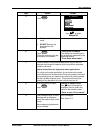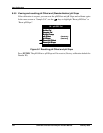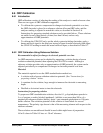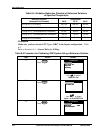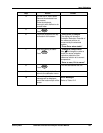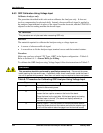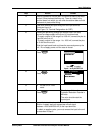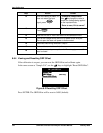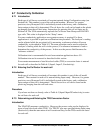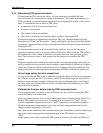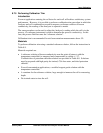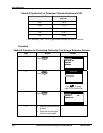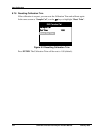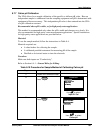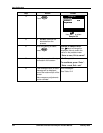
Input Calibration
January 2009 UDA2182 Universal Dual Analyzer Product Manual 157
8.7 Conductivity Calibration
8.7.1 Introduction
Each type of cell has an associated cell constant entered during Configuration setup (see
Section 6.6). This number is part of the cell model number. However, for greater
precision, every Honeywell cell is individually tested at the factory, and a calibration
factor unique to that cell is determined. The cal factor for a cell can be found on the plastic
tag hanging from the cell lead wires. Instructions for entering this cell cal factor are in
Section 6.6. The UDA automatically uploads the Cal Factor from Honeywell DL4XXX
type cells. This value is displayed in the “Setup” menu.
For some conductivity applications even greater accuracy is required. For those
applications it is possible to perform a calibration trim procedure. The Analyzer’s reading
can be adjusted while the associated cell is measuring a reference solution of known
conductivity, as described in Table 8-9. The same procedure can be used to adjust the
Analyzer’s reading while the cell is in the process, if a reference instrument is used to
determine the conductivity of the process. In this case the process fluid becomes the
“reference solution”.
Calibration trim is recommended for acid concentration applications above 5%.
Calibration trim can be removed as described in this section.
For accurate measurement of total dissolved solids (TDS) a conversion factor is entered
for each cell as described in Table 6-5 (Input1, Input 2, Conductivity).
8.7.2 Entering the Cal Factor for each cell
Introduction
Each type of cell has an associated cell constant; this number is part of the cell model
number. The constant for each cell is entered during Input setup. However, for greater
precision, every Honeywell cell is individually tested at the factory, and a calibration
factor unique to that cell is determined. The cal factor for a cell can be found on the
plastic tag hanging from the cell lead wires.
Procedure
If you have not done so already, refer to Table 6-5 (Input1/Input2/Conductivity) to enter
the cal factor for each cell
8.7.3 Determining and Entering the TDS Conversion Factor
Introduction
The UDA2182 measures conductivity. However, the process value can be displayed in
terms of total dissolved solids (TDS). If a TDS PV type was specified during Input setup
(Section 6.6), then the same menu in will contain an entry for the TDS conversion factor
for each cell.



